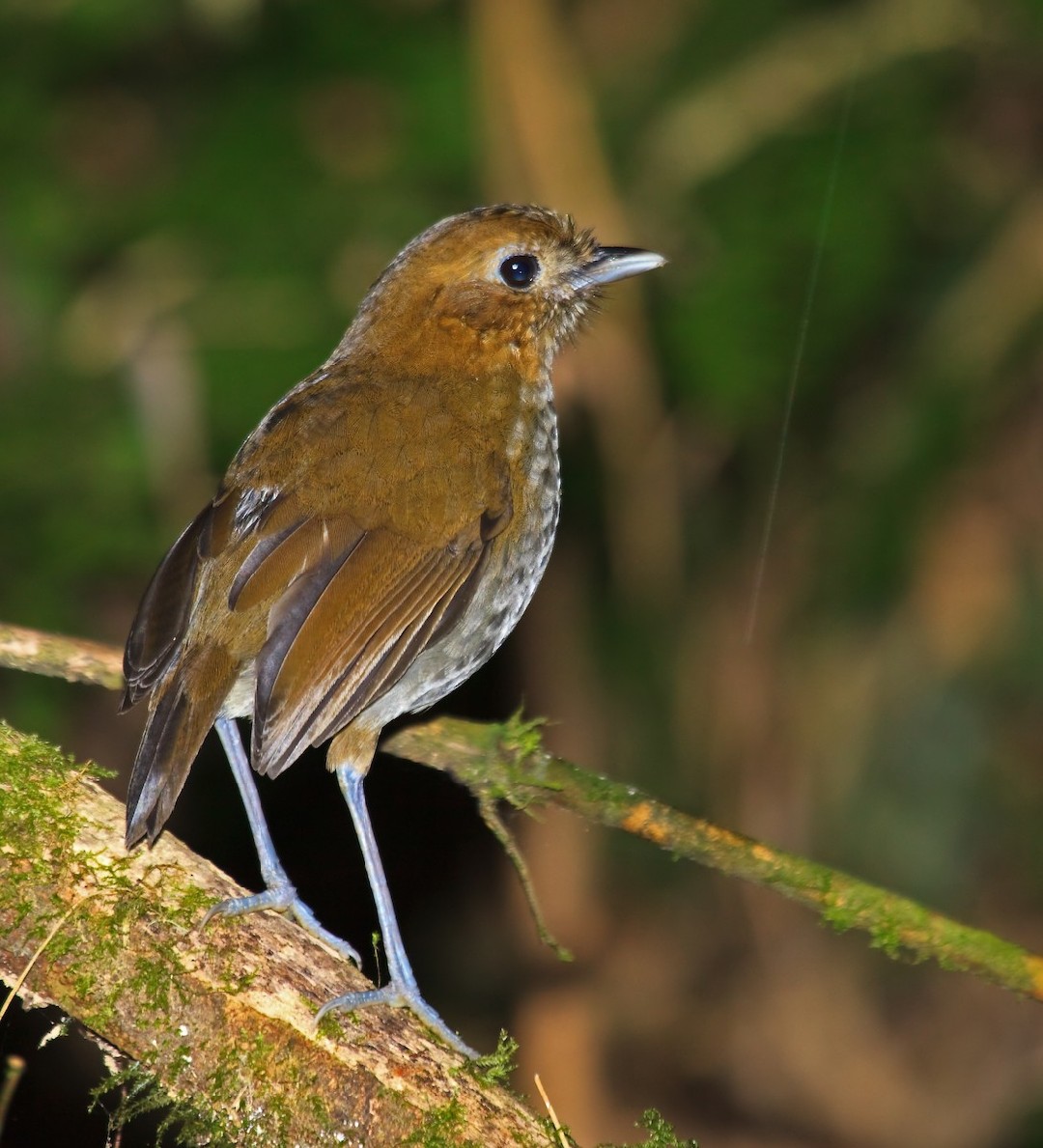Urrao Antpitta
A species of Typical Antpittas Scientific name : Grallaria urraoensis Genus : Typical Antpittas
Urrao Antpitta, A species of Typical Antpittas
Botanical name: Grallaria urraoensis
Genus: Typical Antpittas
Content
Description General Info
 Photo By Nigel Voaden
Photo By Nigel Voaden Description
The bird most closely resembles the brown-banded antpitta, which is endemic to the Cordillera Central of Colombia, but it has a slate-grey breast and lacks the brown flanks and breast band of the other species. Measurements of the living bird from which Barrera and Bartels' holotype material was derived, as well as of the two collected specimens, show weights ranging from 53.5 to 57.4 grams (1.89 to 2.02 oz), flat wing chords of 95–99 millimetres (3.7–3.9 in), tail lengths of 57–63 millimetres (2.2–2.5 in), and tarsus lengths of 44.5–49.9 millimetres (1.75–1.96 in). The sexes are similar in appearance, as with most other antpittas. A captured fledgling was covered with dark grey down with brown edges above and was buff below. Its feet were dark pink; its bill was black above and orange below, with conspicuous red-orange edges. A captured juvenile looked scaled, with patches of chestnut-edged black down intermixed with grey feathers on much of its body, and a buff belly. Its bill resembled that of the fledgling. The song comprises three notes of increasing length and frequency. The birds sing more early in the year. The call is a single note, higher-pitched than the song, which rises, falls, and rises again. The birds often give it in response to loud noises and playbacks of its vocalisations. They call more later in the year. Both song and call resemble those of the brown-banded antpitta, but Fenwick's antpitta's notes are shorter and lower-pitched, and those of its song are separated by wider intervals. 
Size
17 cm
Nest Placement
Ground
Habitat
The urrao Antpitta thrives in montane cloudforests, characterized by dense epiphytic growth and a canopy typically reaching heights between 8-15 meters. The predominant vegetation includes a variety of tree species like Quercus humboldtii, Blakea longipes, Ocotea callophylla, Persea spp., Weinmannia spp., and Podocarpus oleifolius. These forests often feature significant growth of Chusquea bamboo in the understory, which the urrao Antpitta favors for its habitat.
Dite type
Insectivorous
General Info
Feeding Habits
Bird food type
Behavior
The species exhibits behaviour typical of other members of its genus; it is a shy, terrestrial forager for insects (especially beetles) in the leaf-litter within the forest understorey. It ascends to higher perches (up to 1.5 m above the ground) to sing, and is most active and vocal in the hours following dawn and prior to dusk. It usually occurs in pairs, less often singly, and one group of three has been observed. 
Distribution Area
The known distribution of the bird is limited to the Urrao municipality in and near the Colibrí del Sol Bird Reserve, a 28.52 square kilometres (11.01 sq mi) reserve on the south-eastern slope of the Páramo del Sol massif, at the northern end of the Cordillera Occidental of Colombia, and some 55 kilometres (34 mi) west of Medellín, Colombia's second largest city. The massif has over 27 square kilometres (10 sq mi) of relatively intact páramo and Polylepis woodland, containing more such habitat than all the other páramos in the region combined. There the bird is restricted to upper montane cloud forest dominated by Colombian oak, at an altitude of 2,600 to 3,300 metres (8,500 to 10,800 ft) above sea level, where most territories contain Chusquea bamboo thickets. It is suspected that its range may be larger than currently known, but so far surveys have failed to confirm this. 
Species Status
The bird has a very restricted known range, limited to the Colibrí del Sol reserve and its immediate vicinity, while previous surveys in similar habitat in the region have failed to record the species. Moreover, habitat used by the bird has been extensively cleared for pasture, and the area is rich in minerals. The known population of 24 territories has an estimated area of 5.8 square kilometres (2.2 sq mi), giving a conservative global population estimate of 57–156 territories. Both articles on the new species propose that the IUCN classify Fenwick's antpitta as critically endangered, and this will be followed in the forthcoming 2011 edition of the BirdLife International list, which is the authority used for birds by the IUCN. Although it is protected in the Colibrí del Sol reserve, it needs further protective measures. The single bird or pair that was known from outside the reserve has not been recorded since mid-2010 and appears to have disappeared. 

 Photo By Nigel Voaden
Photo By Nigel Voaden Scientific Classification
Phylum
Chordates Class
Birds Order
Perching birds Family
Antpittas Genus
Typical Antpittas Species
Urrao Antpitta